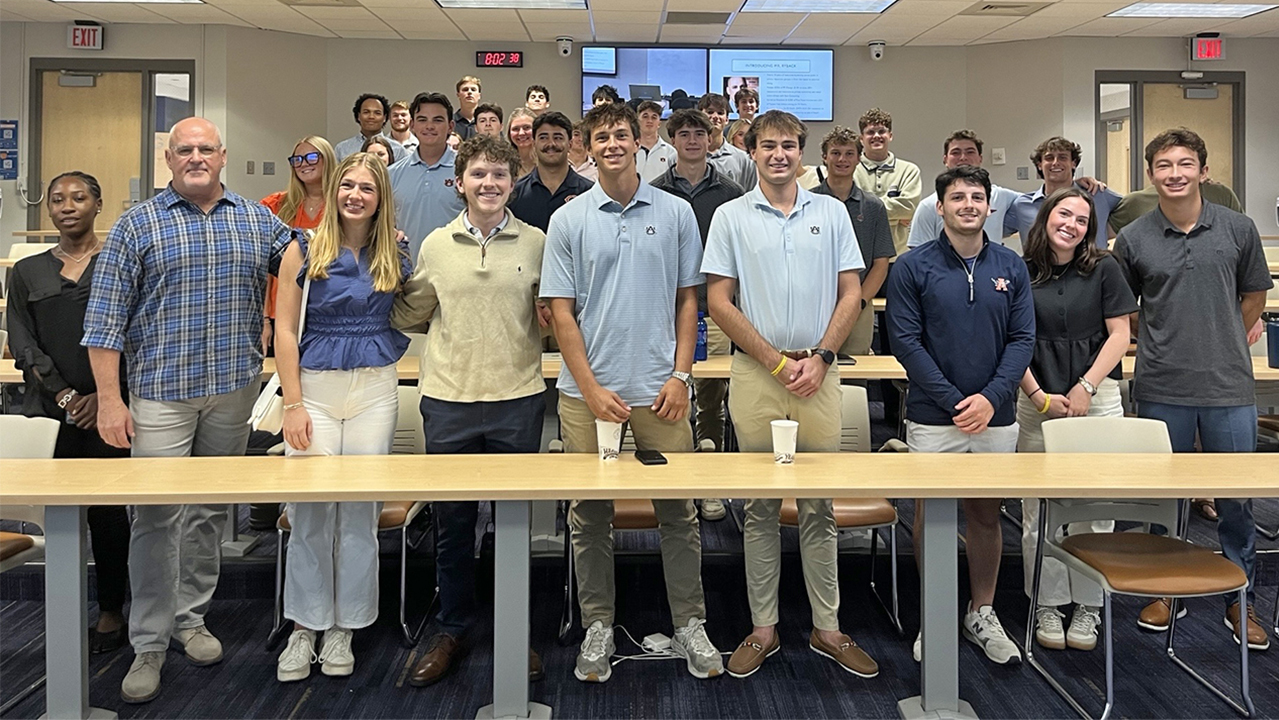| Harbert: |
What is it about David’s new textbook that makes it so noteworthy compared to what
must be numerous texts on the subject?
|
| Hopkins: |
One thing is that David captures the evolving role of product marketing in the new
product development process of today from both commercial and academic perspectives.
The combination of his extensive product marketing leadership in the business world
and his ten years of teaching undergraduates what he learned there makes this curriculum
unique among current texts, most of which are designed for graduate student coursework.
Another measure of the value created here can be found in the impact this curriculum
has on students taking his class over the years. A key component of his class is an
in-depth student project with high expectations for their performance – very challenging.
But he is somehow able to motivate them to meet and often exceed those expectations.
I've sat in on several of his students’ presentations over the years and every time
I’m shocked by just how much they're able to do. I'm always wondering – ‘how does
he get them to be this good?’
|
| Harbert: |
Let’s find out. David, can you first give us a sense of what your experience was in
expanding the role of product marketing in the new product development process before
you joined Harbert’s faculty? That role was virtually non-existent when you first
entered the workforce, right? |
| Hanning: |
That’s correct. With a few exceptions, new product development – and product refinement,
for that matter – was either manufacturing-driven, R&D-driven or a combination of
both. “Develop products that manufacturing can build” was the mantra, with an emphasis
on cost reductions activities. Little input from marketing or sales was requested
or widely accepted either by manufacturing or the R&D side of the organization – which
were often at odds with each other. |
| Harbert: |
You started out as an engineer after earning a Bachelor of Mechanical Engineering
from Auburn and later an MS in Manufacturing Systems Engineering, also from Auburn.
How did that engineering education and on-the-job training help you in your new role
as a product marketer? |
| Hanning: |
As an engineer moving into product marketing, there wasn’t a lot of information available
to really help explain clearly what our role in product development was supposed to
be, let alone could be. Product marketing was open for interpretation and product management ranks were
filled with ex-salespeople.
At that time, there was a lot of academic work out there on refining the product development
pipeline, with R&D at the center of that universe. R&D wanted to develop products
that they thought were right for the market, but in many cases, it turned out that
while they may have been innovative from a technical standpoint, many of these products
and refinements weren't necessarily desired by customers in the market. |
| Harbert: |
But that began to change over the years, right? |
| Hanning: |
Yes, there was one central organization – the Product Development Management Association
(PDMA) - founded in 1976, that became the go-to professional group focused on the
product marketing side, including certification of new product development professionals.
That’s the bulk of what I teach in my class and what's in this text – we cover all
the relevant topics and issues the PDMA advocates. |
| Harbert: |
As the role of product marketing emerged, how did that impact product development?
You mention in the text that product marketing today differs from the traditional
role that a company’s sales force used to play in product development – can you explain
that distinction? |
| Hanning: |
A company’s sales team is driven primarily by unit sales – that’s how they maximize
their compensation, by selling whatever it is the company puts into the market. While
senior management and product development may seek their feedback on what customers
want, individual salespeople can often misinterpret the needs of one customer as the
needs of all customers, which is seldom the case. And so sometimes we fell into the
trap of developing a new product line and launching it into the marketplace only to
hear customers say, “we really didn't need that.” That told me we must go directly
to our target market customers and understand their needs and problems.
Competitive factors also play an important role in new product development, which
is something sales traditionally isn’t in a position to assess. Contemporary product
marketing teams manage the customer, competitors, external market and internal product-centric
strategies that lead to new product development and subsequent marketing plans that
the sales team puts into action with customers. |
| Harbert: |
With that distinction made, can you define in a little more detail how product marketing
bridges the gap between what customers want and what the company ends up designing
and manufacturing? How does that work? |
| Hanning: |
As an on-going process, product marketers blend customer needs with competitor analysis,
external market drivers and internal company goals and objectives to generate new
product ideas. These ideas are then refined into specific features required and performance
criteria to be achieved and then evaluated based on their financial potential with
the goal that each concept will deliver a superior product with benefits that are
most important to customers. Since most studies have shown that few companies do this
well on a consistent basis, companies that do will also gain competitive advantages
and increased market share.
The most attractive new product ideas gain entry into the product development pipeline
and are developed by cross-functional design teams. If the concept criteria remains
intact at the end of the pipeline, the developed new product is launched to the market
based on a multi-faceted marketing plan that drives awareness, maximizes availability
and promotes the primary features and benefits of the new product.
Successful new product development takes an entire company to embrace it and can be
derailed at any point along the process. It’s key that product marketing get the process
off to a good start with viable, detailed, and attractive new product concepts and
remains vigilant during the design phases to ensure the resulting product is attractive
to the target market.
|
| Harbert: |
Now is a good time to shift towards the textbook itself. You mention the importance
of “boiling down” the key drivers that guide companies in developing new products.
That term also applies to how you teach the principles of product marketing to your
undergraduate students, correct? |
| Hanning: |
Yes, and that isn’t always as easy as it may sound – either for me or for the students
taking my course. There’s so much fundamental information they need to take in and
business processes they need to learn in a short period of time before any new product
idea generation can be pursued.
I managed and trained a lot of people during my business career, and I guess I just
have a knack for making the complex understandable. So, when I joined Auburn ten years
ago, I was asked to develop a course at the undergraduate level that can educate students
who know nothing about product marketing and in many cases are not even marketing
majors.
The course this textbook supports gives them a level of understanding that would probably
exceed what they would learn in about three to five years working in the field. The
course pulls back the curtain and exposes them to what product marketing is all about
but more importantly gives them a roadmap to follow if they find themselves part of
a product marketing team. That approach shortens the learning curve. |
| Harbert: |
One final question – given the commercial, real-world insight your product marketing
textbook provides students, couldn’t it also serve as a blueprint for employee training
in product marketing? Is that something you considered in creating it?
|
| Hanning: |
Chris actually brought this up – that this book could be used as the roadmap for introductory
employee training and even executive education. However, as I have discussed with
students enrolled in the course, every company has their own methodologies to develop
new products. This text and course provide students with an approach, not necessarily the approach to new product development. The course is a blend of published best practices
and my experiences developing new products for a market leader. The undergraduate
course is capable of being condensed into an executive-specific course packaged for
company product marketing teams to use in looking for ideas to improve their current
new product development approach. It's a natural fit.
|

 Degrees & Programs
Degrees & Programs
 Faculty & Staff
Faculty & Staff
 Career Development
Career Development
 Recruiters & Industry
Recruiters & Industry



